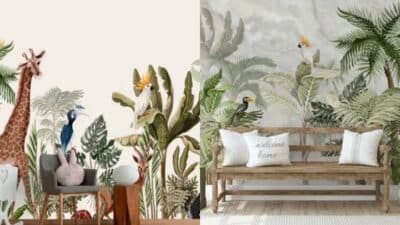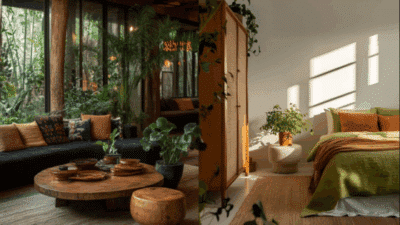Ever stared at your tiny bedroom, feeling like it’s more of a glorified closet than a peaceful sanctuary? You’re not alone. Small spaces can feel incredibly restrictive, especially when they’re meant to be your personal haven. But what if I told you that transforming that snug little room into a stylish, functional, and deeply personal retreat doesn’t require a lottery win? That’s right, a Small Bedroom Makeover on a Budget is not just a dream – it’s entirely achievable. With a sprinkle of creativity, a dash of smart planning, and a commitment to making every dollar count, you can unleash your inner interior designer and craft a space that feels both expansive and uniquely you. Forget pricey renovations and designer furniture; we’re talking about clever tricks, DIY magic, and strategic choices that will make your small bedroom feel significantly larger, more organized, and absolutely stunning, all without emptying your wallet.
The Mindset Shift: Creativity Over Cash
Before you even think about moving a single piece of furniture, the most crucial step in any budget makeover is a shift in mindset. You’re not limited by your budget; you’re empowered by it to be more innovative. Think of this as a fun design challenge. How can you achieve high-impact results with low-cost solutions? This approach will open up a world of possibilities you might not have considered before.
Decluttering: Your Free First Step to Space
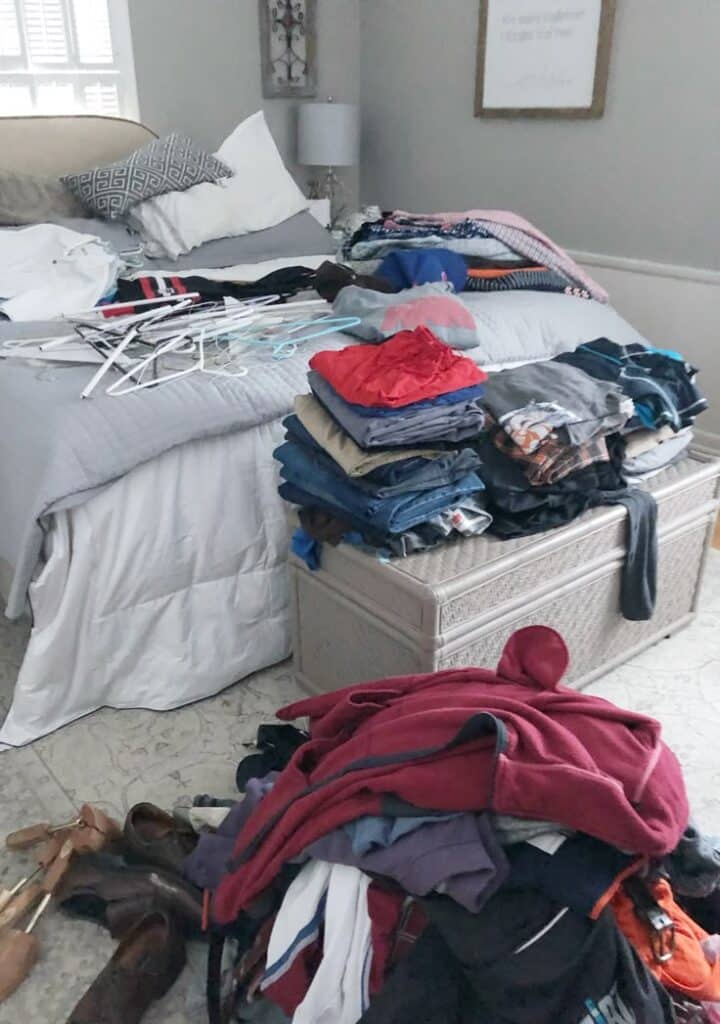
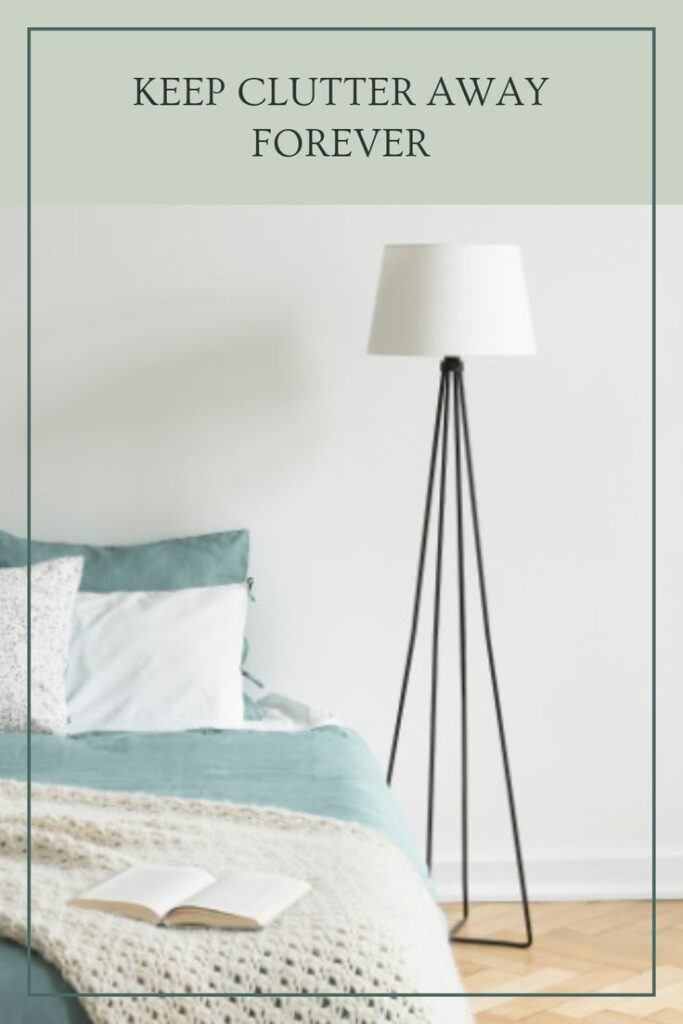
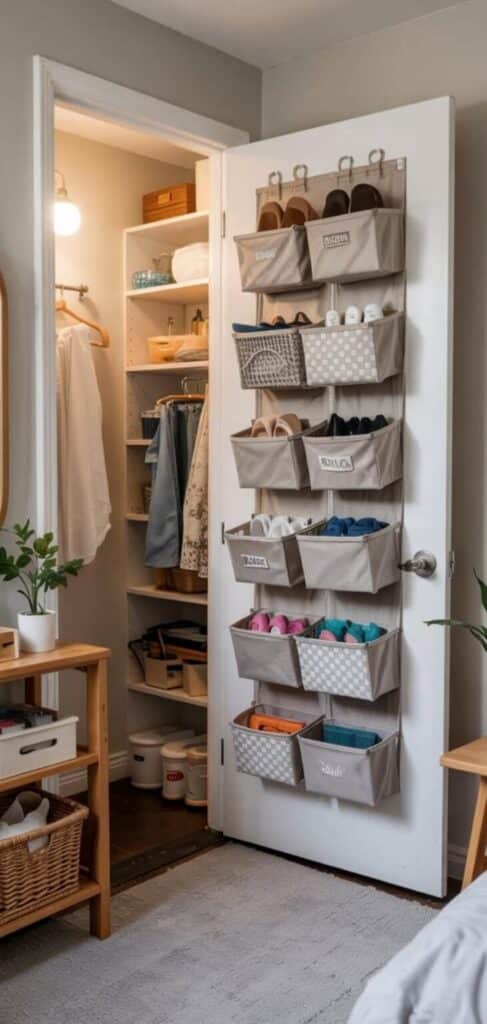
Seriously, the best way to start a small bedroom makeover on a budget costs absolutely nothing: declutter. A cluttered room feels smaller, more stressful, and visually chaotic. Take everything out, or at least categorize it. Be ruthless. Ask yourself:
- Do I use this regularly?
- Does it bring me joy?
- Do I have another place for it?
- Could I live without it?
Donate, sell, or discard anything that doesn’t meet these criteria. The less you have, the more spacious your room will feel, and the easier it will be to implement your new design ideas. Plus, it gives you a clean slate to work with.
Defining Your Style on a Dime
Just because you’re on a budget doesn’t mean your room can’t have a distinct personality. In fact, limited funds often push you to be more authentic. Start by gathering inspiration. Pinterest, Instagram, and design blogs are your friends here. Create a mood board. Do you lean towards minimalist, bohemian, industrial, or something else? Pay attention to colors, textures, and the overall vibe. This will guide your choices and prevent impulse buys that don’t fit your vision. Even with a budget, knowing your aesthetic helps you develop a key sense of personal style that will shine through.
Smart Furniture Choices: Maximizing Every Inch
In a small bedroom, every piece of furniture needs to pull its weight. This isn’t the place for bulky, single-purpose items. Think multi-functional, scaled-down, and space-saving.
Vertical Storage: Look Up!
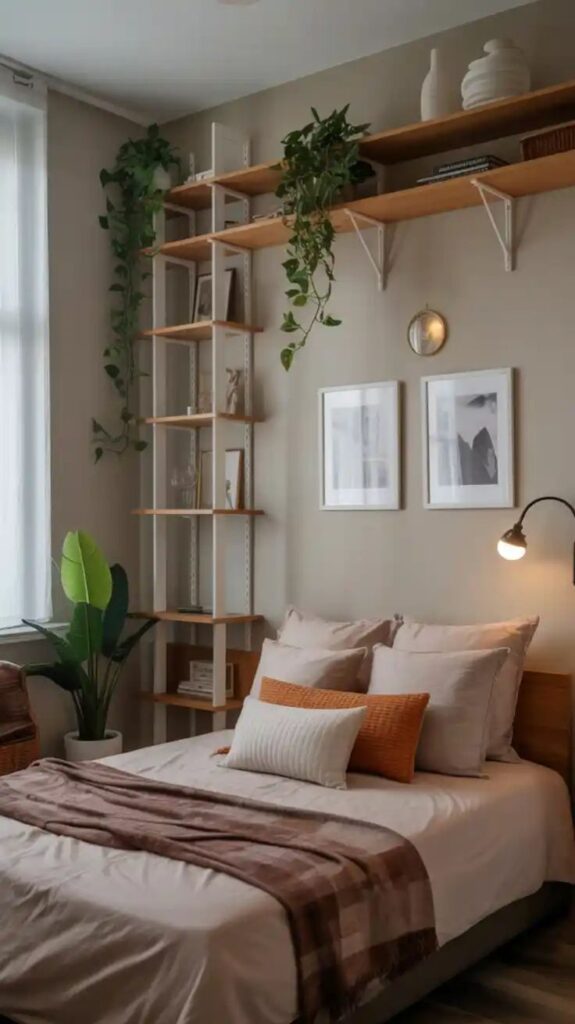
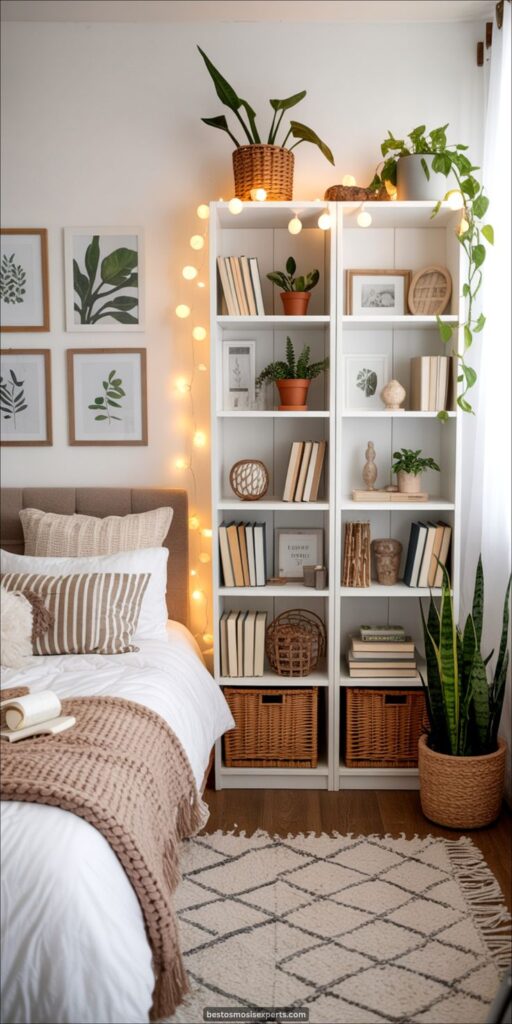

When floor space is scarce, the only way to go is up. Embrace vertical storage solutions.
- Tall, Narrow Bookshelves: Instead of wide units, opt for slender bookshelves that reach closer to the ceiling. They offer ample storage for books, decor, and even folded clothes without eating much into your room’s footprint.
- Wall-Mounted Shelves: Floating shelves are a small bedroom’s best friend. They keep items off the floor, creating a sense of openness, and are perfect for displaying cherished items, plants, or extra storage.
- Over-the-Door Organizers: Don’t forget the back of your door! Over-the-door shoe organizers, hooks, or multi-pocket fabric storage units can house anything from accessories to toiletries, freeing up drawer space.
Beds with Built-in Storage

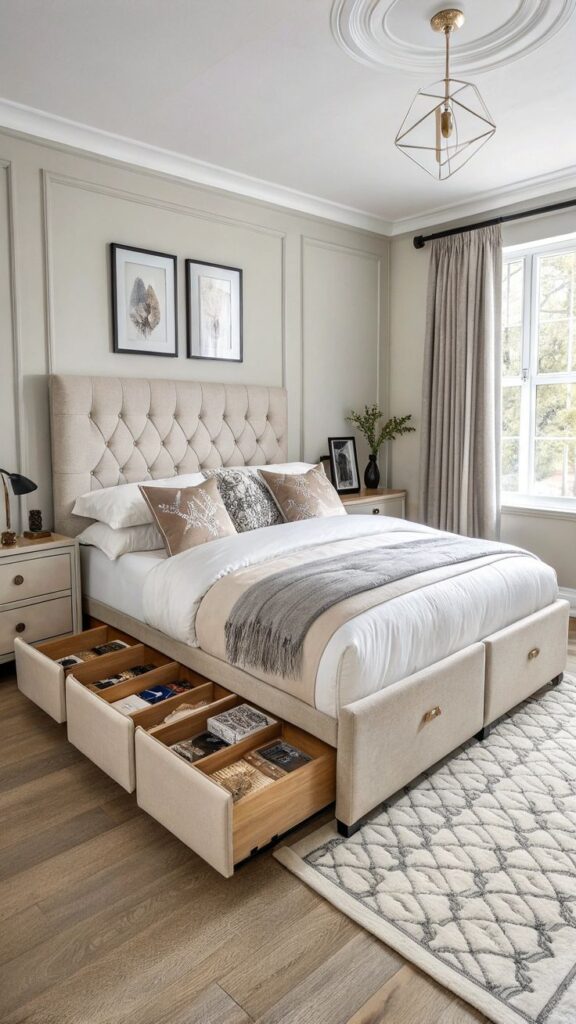
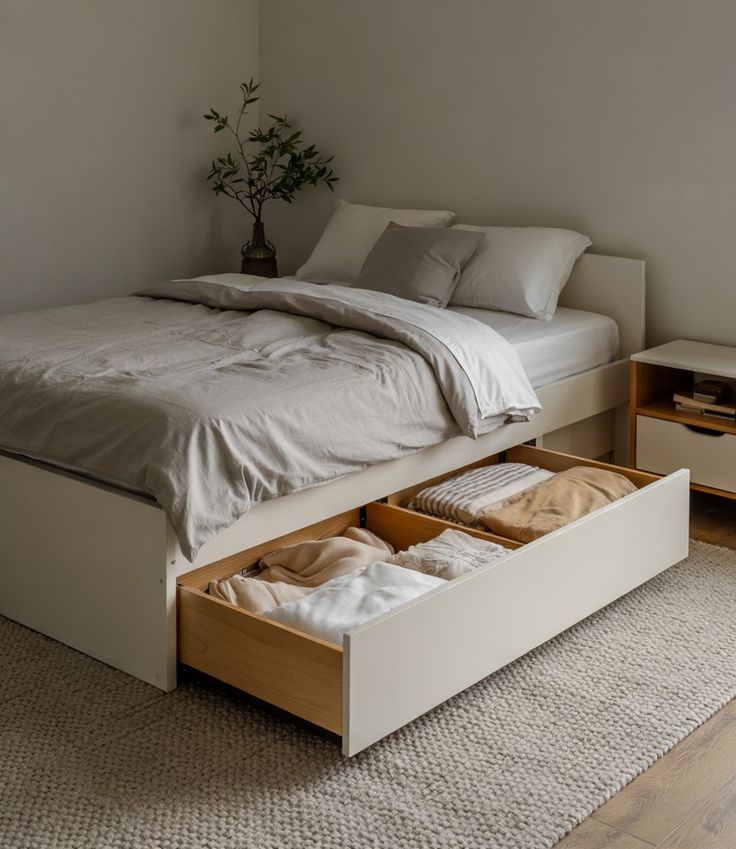
Your bed is the largest piece of furniture in a small bedroom, so make it work harder for you.
- Platform Beds with Drawers: These are a godsend. Integrated drawers underneath the mattress provide hidden storage for linens, off-season clothing, or anything you want out of sight.
- Ottoman Beds: Similar to platform beds, ottoman beds feature a hydraulic lift mechanism that raises the mattress, revealing a huge storage area beneath.
- Storage Bins Underneath: If a new bed isn’t in the budget, simply use under-bed storage bins. Look for low-profile, wheeled options that can slide out easily. Clear containers let you see what’s inside at a glance.
Foldable and Modular Furniture
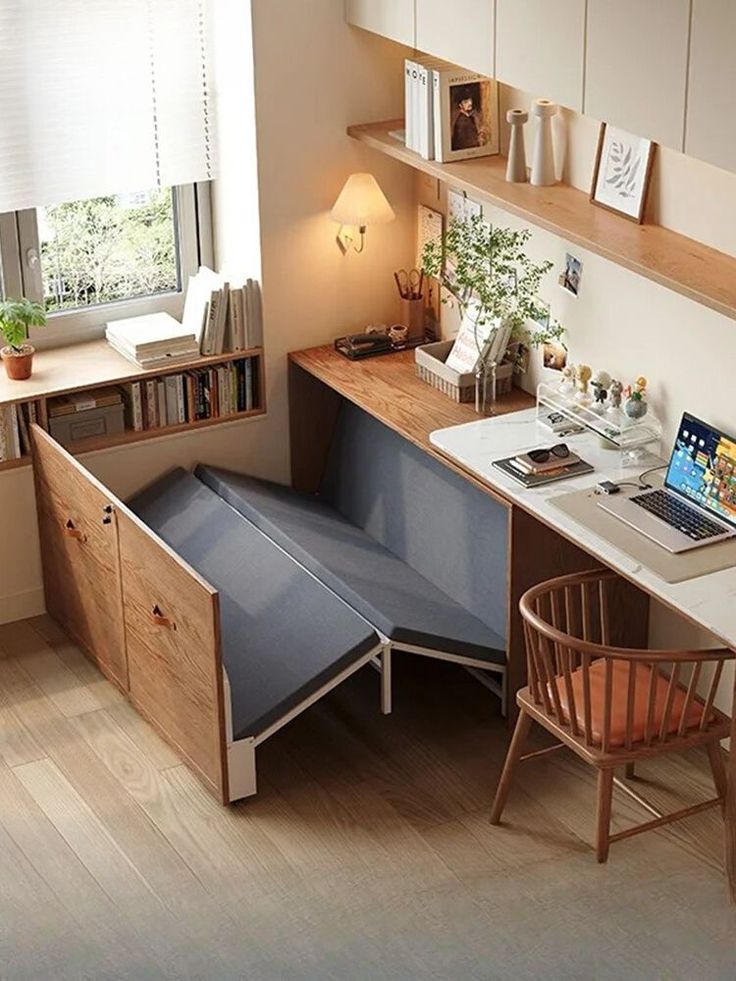
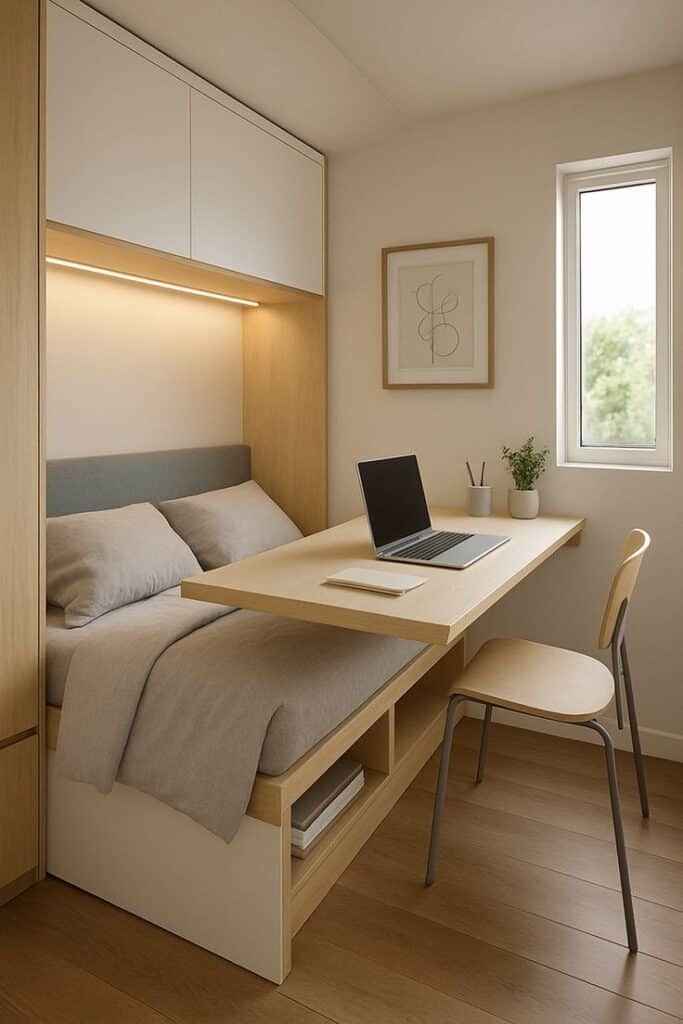
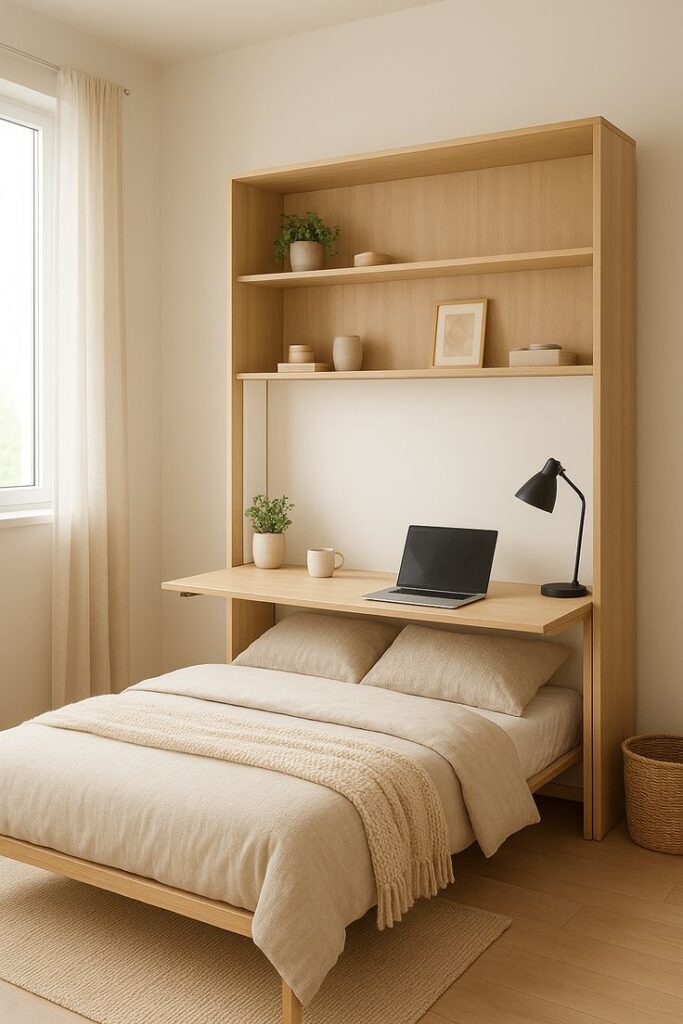
Consider items that can disappear when not in use or reconfigure to serve different functions.
- Fold-Down Desks: If you need a workspace, a desk that folds flush against the wall is perfect for tiny rooms.
- Nesting Tables: A set of smaller tables that tuck under a larger one can provide surface area when needed and then consolidate to save space.
- Stools with Storage: A small ottoman or stool can serve as extra seating, a bedside table, or discreet storage for blankets or magazines.
- Bench Seating: A narrow bench at the foot of the bed can offer seating and often has hidden storage too. Many of these creative ideas can be adapted from 9 space-saving furniture ideas for small patios and brought indoors.
The Power of Paint and Color: Illusions of Grandeur
Color is one of the most impactful and budget-friendly tools you have to transform a space. In a small bedroom, strategic color choices can make the room feel much larger and more inviting.
Light Colors for Expansion
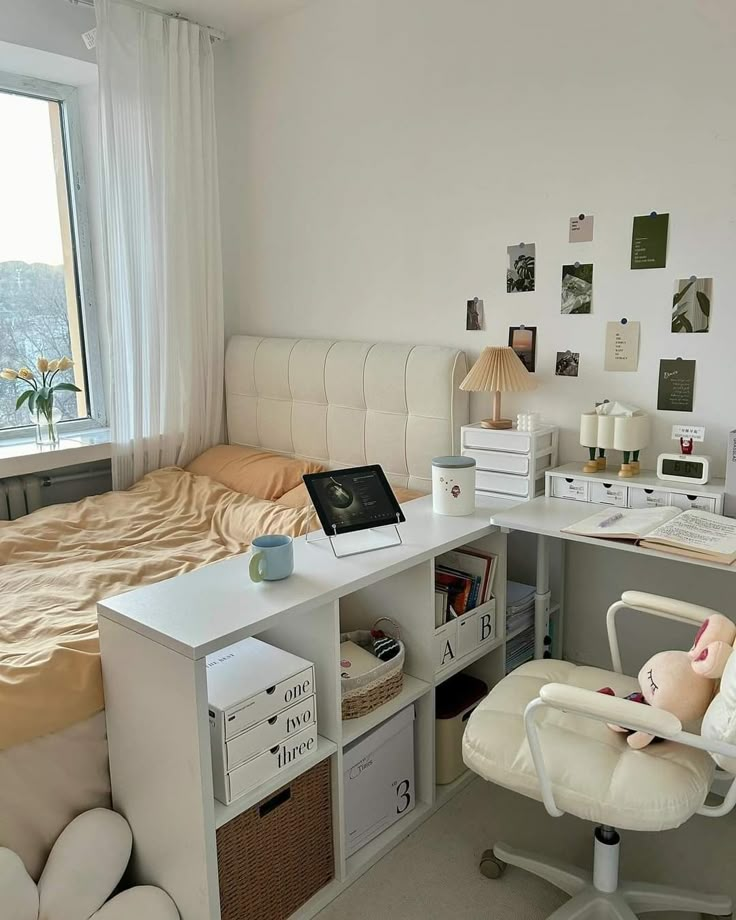
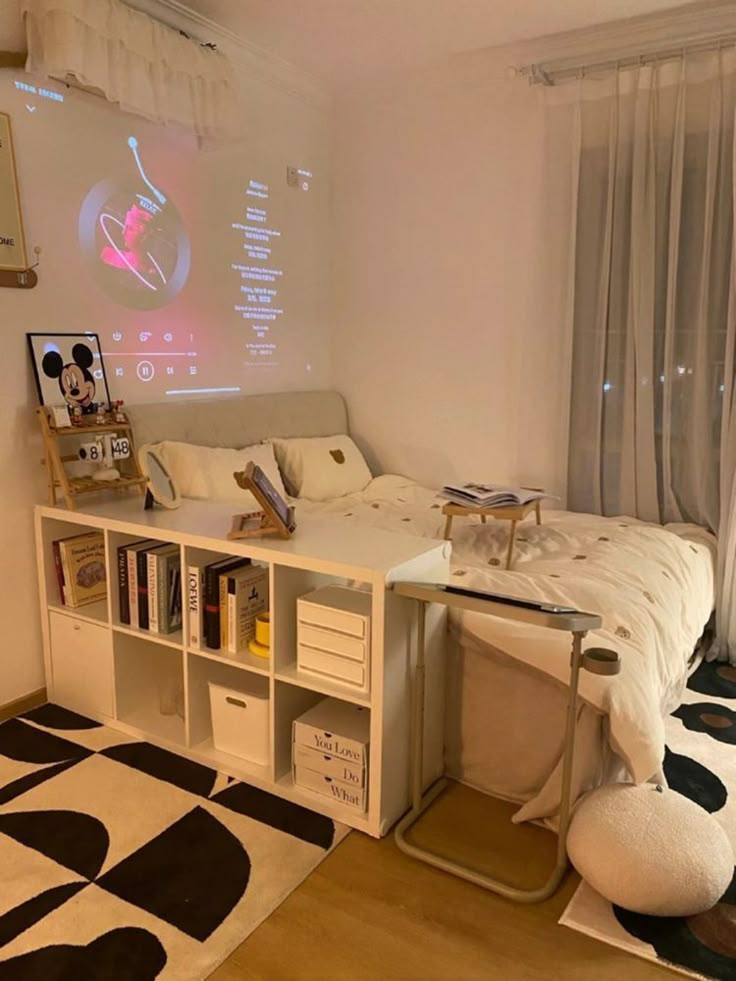
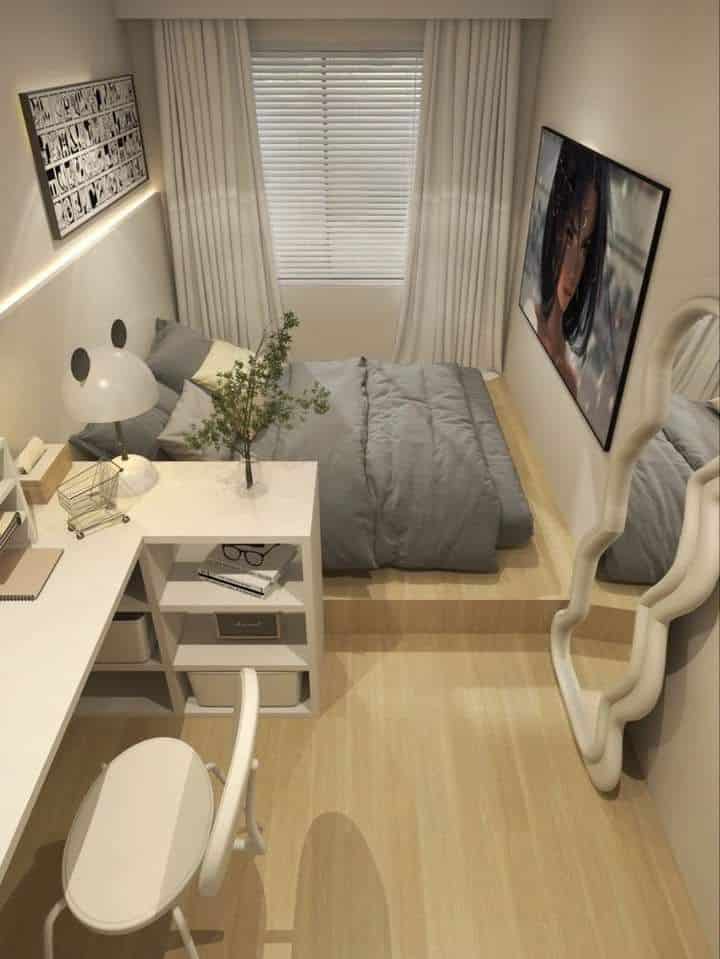
It’s a classic for a reason: light colors reflect light, making a room feel more open and airy.
- Whites, Creams, and Pale Greys: These hues are fantastic base colors for small rooms. They create a clean canvas and bounce natural light around, pushing the walls visually outward.
- Soft Pastels: If you want a bit more color, consider very pale shades of blue, green, or pink. These can add a gentle warmth or coolness without overwhelming the space.
- Monochromatic Schemes: Sticking to a single color family (e.g., various shades of light blue) creates a cohesive look that prevents visual breaks, making the room flow seamlessly and appear larger.
Strategic Accent Walls
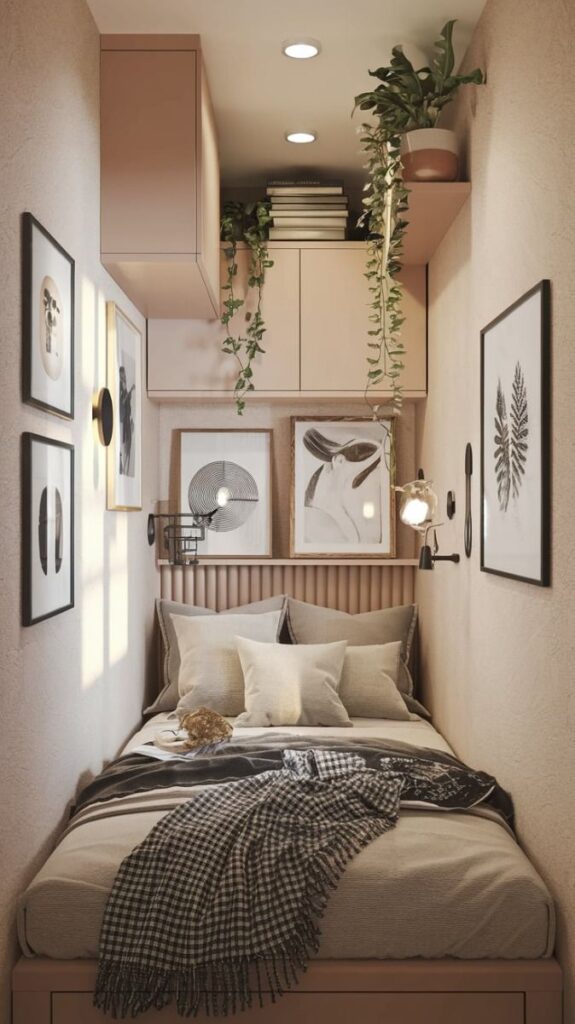
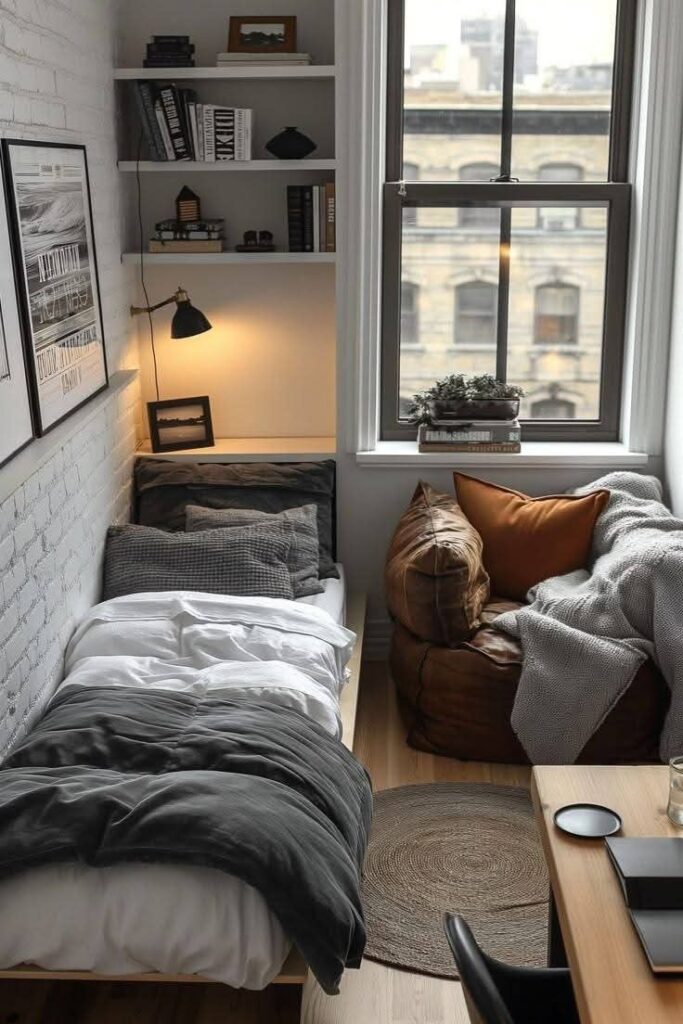

While light colors dominate, a single accent wall can add depth and personality without making the room feel cramped.
- Behind the Bed: This is a popular choice, as the bed naturally draws the eye. A darker or more vibrant color, or even a subtle patterned wallpaper (removable peel-and-stick options are budget-friendly and rental-friendly), can create a focal point.
- Wallpaper Magic: Don’t be afraid of wallpaper! A carefully chosen, light-colored wallpaper with a subtle pattern can add texture and visual interest. Avoid large, busy patterns that can make the room feel cluttered.
Ceiling and Trim Tricks
These often-overlooked areas can play a big role in how spacious your room feels.
- Painting the Ceiling Light: Keeping the ceiling lighter than your walls (often white) helps it feel higher. If you paint your walls a light color, continuing that color onto the ceiling can create an enveloping, airy feeling, blurring the lines between wall and ceiling.
- Matching Trim and Wall Color: Painting your trim the same color as your walls (or a slightly lighter shade) can make the walls appear taller, as there are no harsh visual breaks. If you want to make a statement, painting trim a contrasting white can create a classic, crisp look, but it can also visually “cut off” the walls.
Lighting Your Way to a Bigger Feel: Bright Ideas
Lighting isn’t just about seeing; it’s about setting a mood and creating illusions. Thoughtful lighting can make a small bedroom feel significantly more spacious and inviting.
Natural Light Maximization
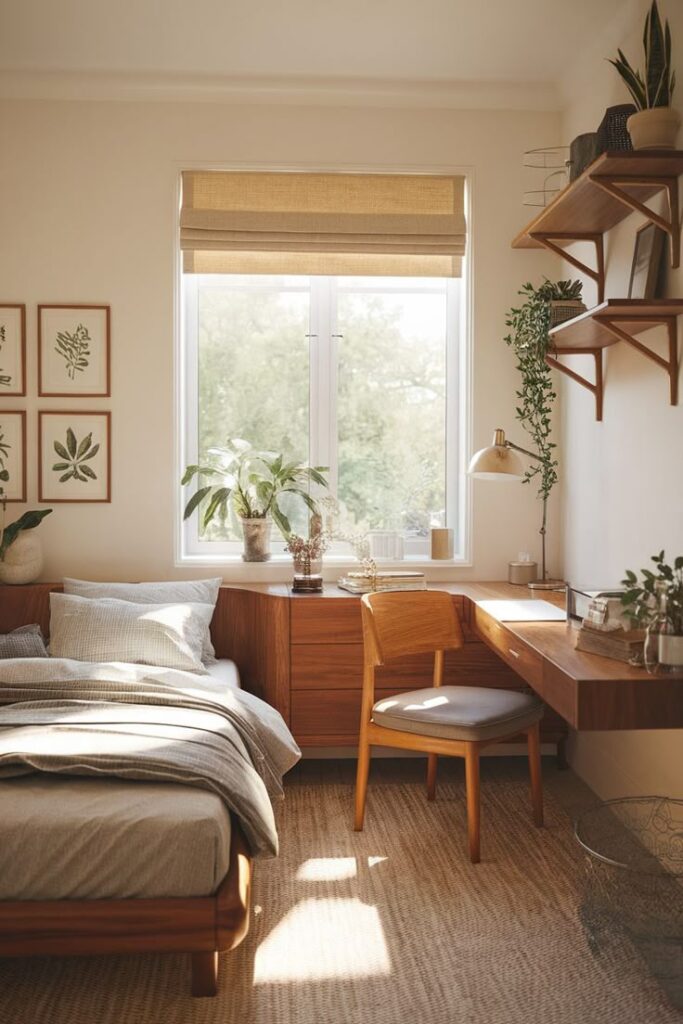


The cheapest and most effective light source is the sun. Maximize every ray!
- Sheer or Light Curtains: Ditch heavy, dark drapes. Opt for sheer, light-colored curtains that allow natural light to filter in while still providing a touch of privacy. You can also use blinds that pull up completely to expose the entire window.
- Keep Windows Clear: Avoid placing tall furniture directly in front of windows, which can block precious daylight.
- Clean Windows: A simple act, but sparkling clean windows let in more light!
Layered Artificial Lighting
A single overhead light can make a small room feel stark and flat. Instead, layer different types of artificial lighting.
- Ambient Lighting: This is your general room illumination. A flush-mount ceiling light or a stylish pendant can provide overall brightness.
- Task Lighting: For reading in bed or working at a small desk, task lighting is crucial. A wall-mounted sconce or a clip-on light for your headboard saves precious bedside table space.
- Accent Lighting: This adds warmth and highlights features. String lights, small LED strips behind furniture, or a small table lamp can create a cozy ambiance.
Lamps and Fixtures that Save Space
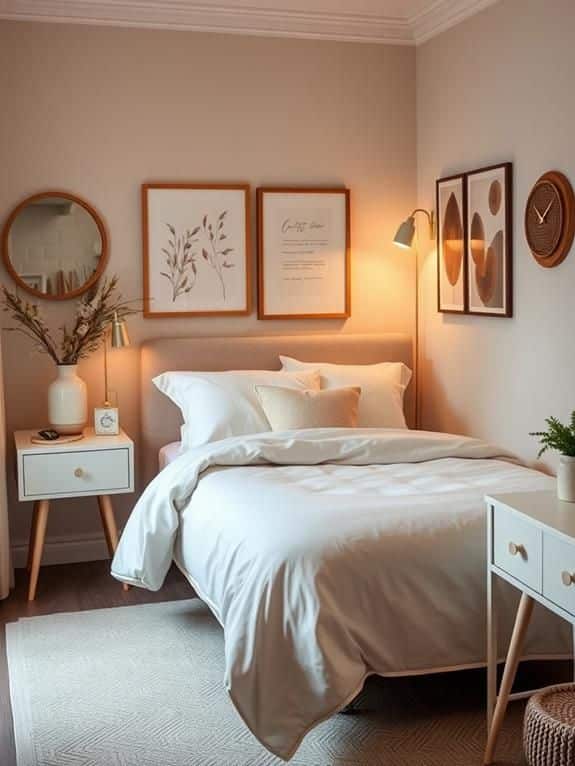
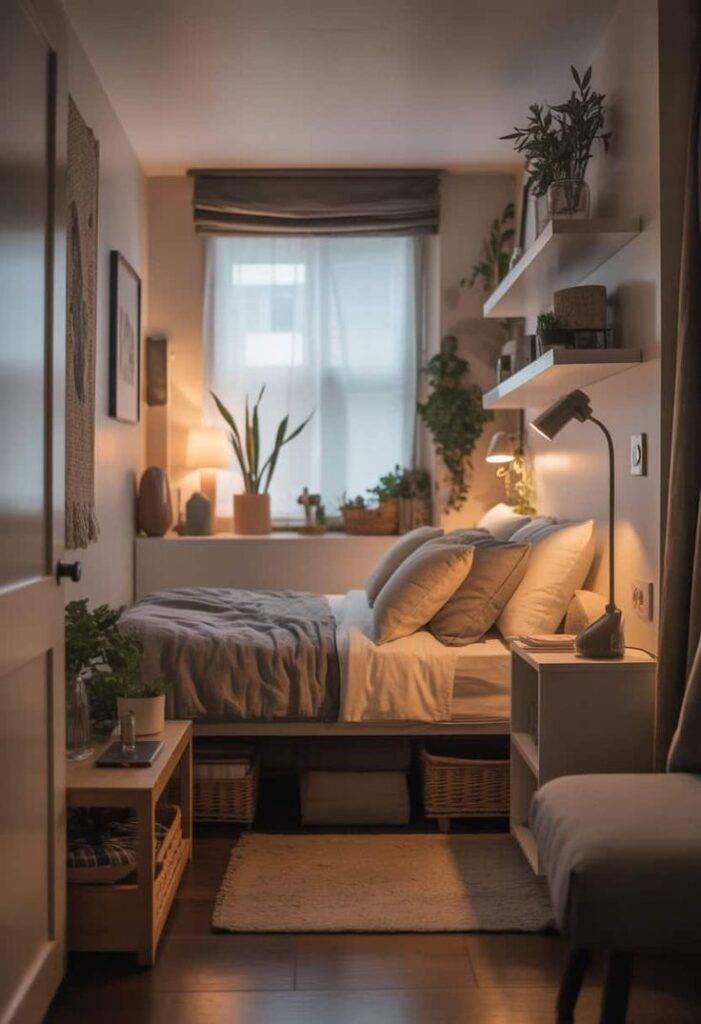

Choose lighting that doesn’t eat up valuable surface area.
- Wall Sconces: These are excellent for beside the bed or above a desk, freeing up nightstand space.
- Floor Lamps with Shelves: Some floor lamps come with built-in small shelves, providing both light and a surface for your phone or a book.
- Pendant Lights: Hanging a pendant light from the ceiling can replace a bulky table lamp on a nightstand.
Mirror, Mirror on the Wall: The Illusionist’s Trick
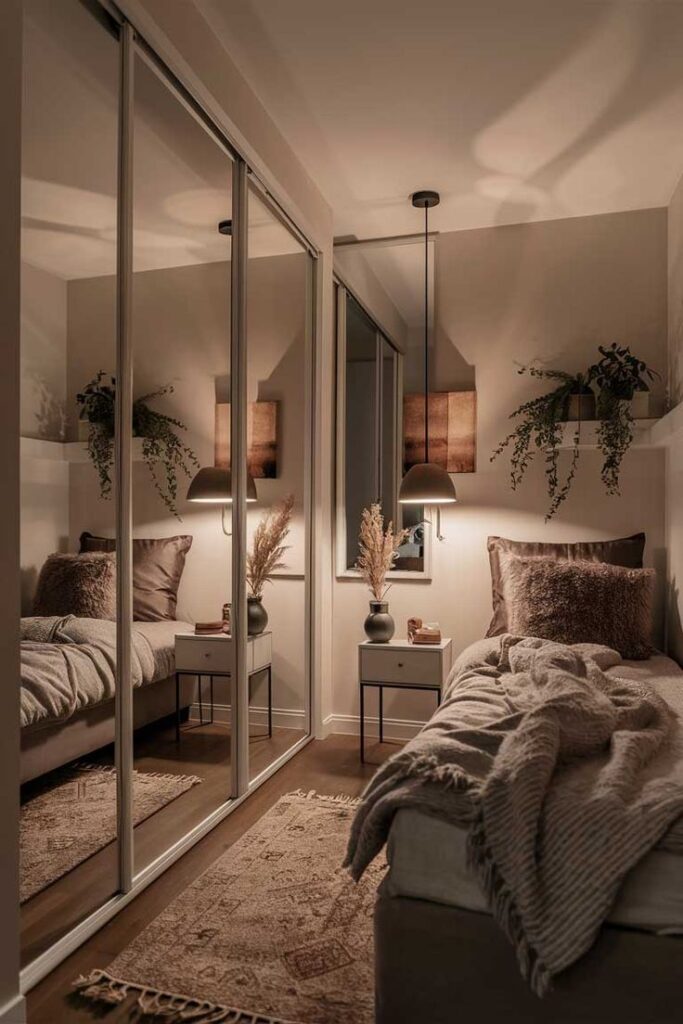
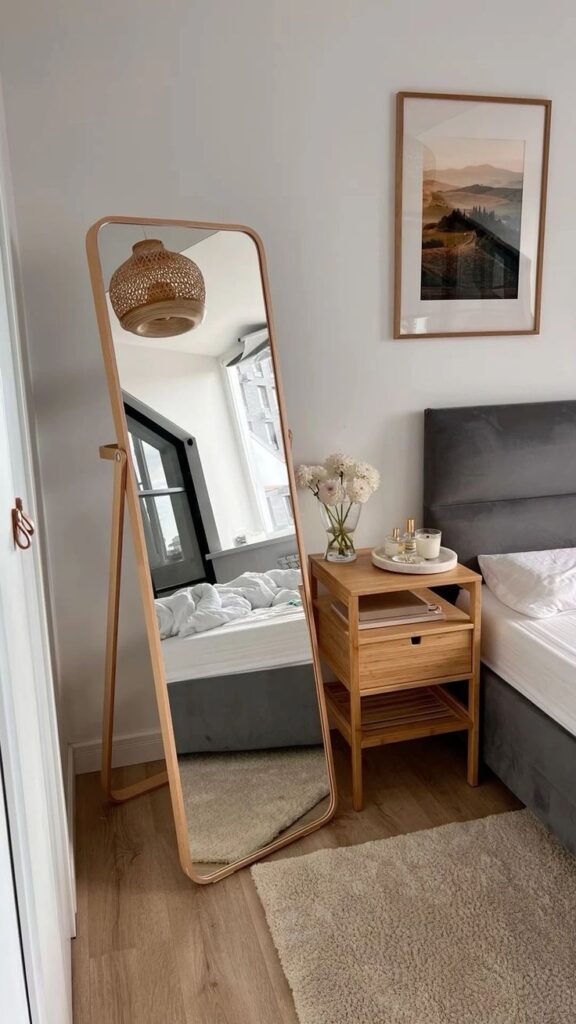

Mirrors are pure magic in a small room. They reflect light and create the illusion of depth, making your space feel much larger than it actually is.
- Large Wall Mirror: A full-length mirror leaning against a wall or mounted vertically can double the perceived size of the room. Place it strategically opposite a window or a beautiful piece of art to reflect light and visual interest.
- Wardrobe Mirrors: If you have a wardrobe, consider replacing plain door panels with mirrored ones. This serves a dual purpose: a full-length mirror and space expansion.
- Multiple Small Mirrors: A gallery wall made of several smaller, framed mirrors can add decorative flair while still contributing to the reflective quality that expands the space.
- Mirror Placement: Experiment with placing mirrors in different spots to see where they reflect the most light and create the best illusion of space. Avoid placing two mirrors directly opposite each other, as this can create an infinite, somewhat disorienting reflection.
Textiles and Soft Furnishings: Adding Comfort and Style
While you want to avoid clutter, textiles add texture, warmth, and personality to a bedroom. Choose them wisely to enhance rather than overwhelm your small space.
Curtains and Blinds: Window Dressing Wisdom
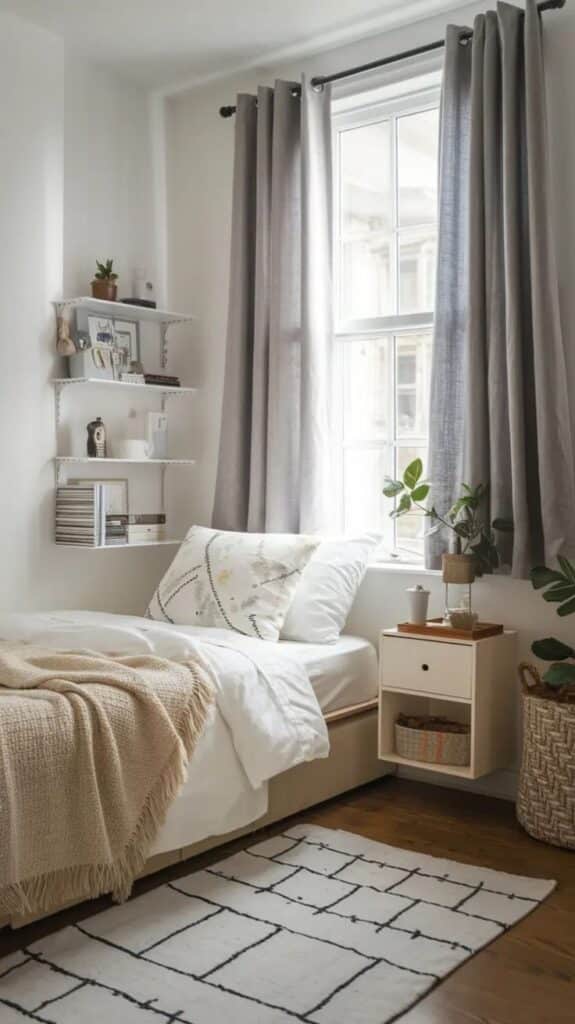


- Go High and Wide: Hang your curtain rod several inches wider than your window frame and as close to the ceiling as possible. This makes the window appear larger and the ceiling taller.
- Light Fabrics: As mentioned with natural light, sheer or light-colored fabrics for curtains are best. They allow light in and don’t visually weigh down the room.
- Roller Blinds or Roman Shades: These options offer a very clean, minimalist look and can be pulled completely out of the way, making them ideal for small windows.
Bedding and Throws: Your Comfort Zone
Your bed is the focal point, so make it inviting.
- Crisp, Light Bedding: White, cream, or light-colored bedding keeps the bed from feeling too heavy and blends seamlessly with light walls, enhancing the feeling of spaciousness.
- Pops of Color/Texture: Introduce your chosen accent colors through throw pillows or a single textured throw blanket. These small elements add interest without dominating.
- Neatly Made Bed: A tidy bed instantly makes the entire room look more organized and therefore feel larger.
Rugs for Definition
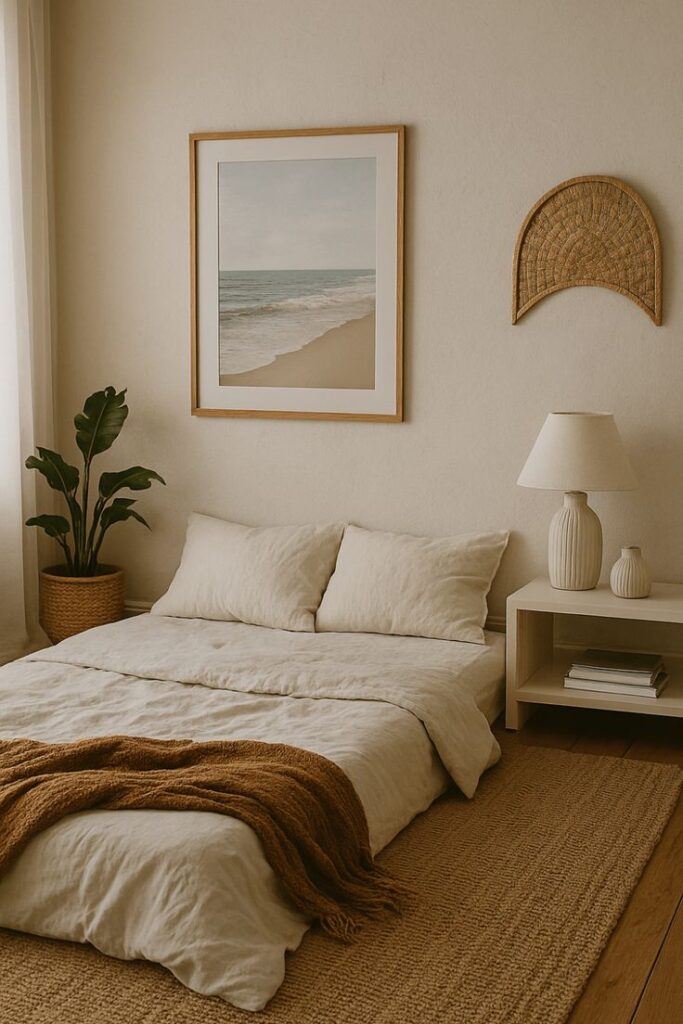

A rug can define an area and add warmth, but choose carefully.
- Large Enough: Don’t get a postage-stamp-sized rug. It will make the room feel even smaller. Choose a rug that’s large enough for the front two legs of your bed to rest on, extending a good distance beyond. This helps ground the space.
- Light Colors and Subtle Patterns: Again, light colors work best. A rug with a subtle texture or a very delicate pattern can add interest without making the floor feel busy.
Smart Storage Solutions: Every Nook and Cranny
Even after decluttering and choosing multi-functional furniture, you’ll still have things to store. Getting creative with hidden and integrated storage is key for a small bedroom makeover on a budget.
Wall-Mounted Shelves and Cubbies
These are your best friends for keeping things off the floor and visible yet organized.
- Above the Bed: A long shelf above the headboard can hold books, small plants, and decorative items.
- Corner Shelves: Don’t forget those awkward corners! Small corner shelves are perfect for tucking away essentials or displaying small trinkets.
- Modular Cubbies: Stackable cubby units can be arranged in various configurations to fit specific spaces and needs, offering flexible storage. For instance, sustainable storage solutions emphasize adaptability, which is crucial in compact areas.
Door and Over-the-Door Organizers
Don’t underestimate the back of your bedroom door or even your closet door.
- Shoe Organizers: Clear plastic shoe organizers can hold shoes, but also scarves, small accessories, toiletries, or even craft supplies.
- Hooks and Rods: Install hooks for robes, scarves, or bags. A slim towel bar can hold multiple hangers for lighter items.
Clever Nooks and Crannies
- Behind the Door: If you have space, a narrow, tall cabinet can be hidden behind the door when it’s open.
- Window Sills: If your window sills are deep enough, they can serve as mini-shelves for small items.
- Wall Pockets: Fabric wall pockets or hanging organizers can be useful for magazines, remotes, or other small items that often end up cluttering surfaces.
DIY Decor and Personal Touches: Your Signature Style
Injecting personality doesn’t require a huge budget. DIY projects and carefully curated personal items make your bedroom feel like yours.
Repurposing Old Items
Before buying new, look at what you already have or what friends/family are getting rid of.
- Painted Furniture: A fresh coat of paint can transform an old dresser or nightstand. Light colors work best for small spaces.
- Crates as Shelves: Wooden crates can be cleaned, painted, and stacked or mounted on the wall to create rustic, affordable shelving.
- Fabric Scraps: Use old fabric scraps to make cushion covers, a fabric headboard, or even a unique piece of wall art.
Gallery Walls on a Dime
A well-executed gallery wall can be a focal point without taking up floor space.
- Print Your Own Photos: Use your favorite photos, print them affordably, and frame them in budget-friendly frames (thrift stores are great for this!).
- Free Printables: Many artists and designers offer free digital art prints online that you can download and print at home or at a local print shop for pennies.
- DIY Art: Try simple abstract paintings, pressed flowers, or even drawing aesthetic sketches to frame.
- Mix and Match: Combine photos, art, small mirrors, and even meaningful mementos to create an eclectic and personal display.
Greenery for Life
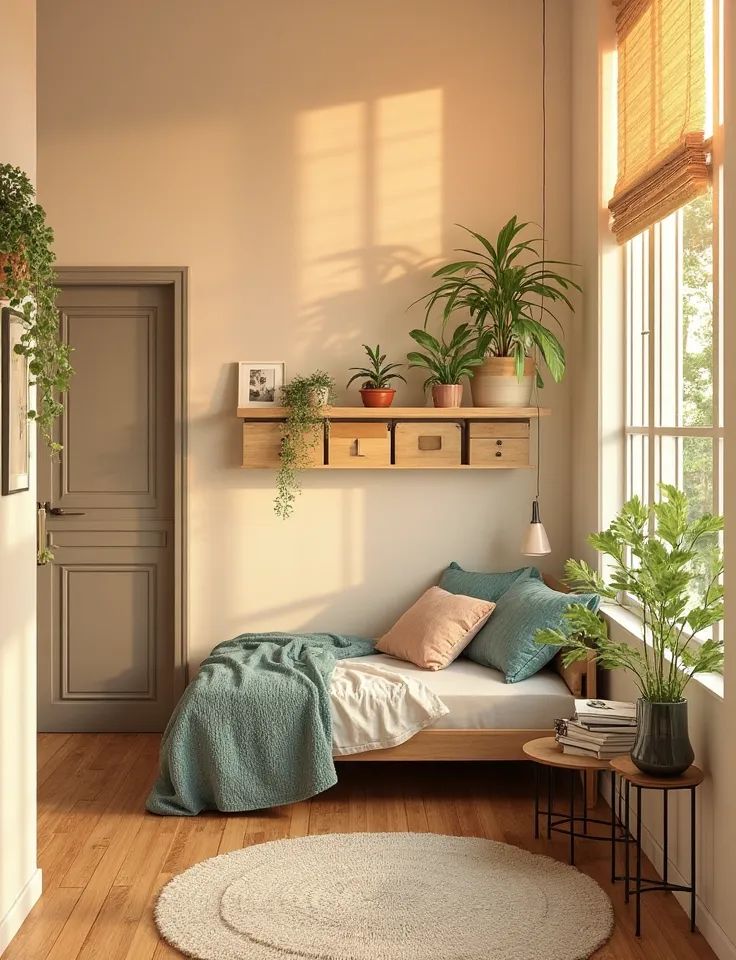
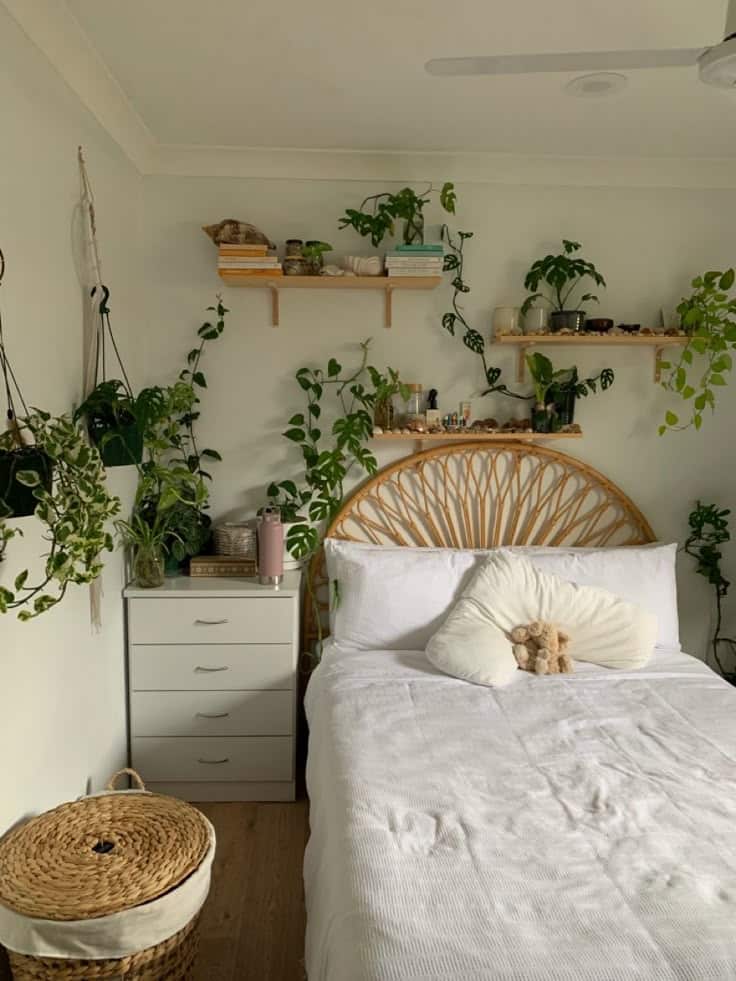
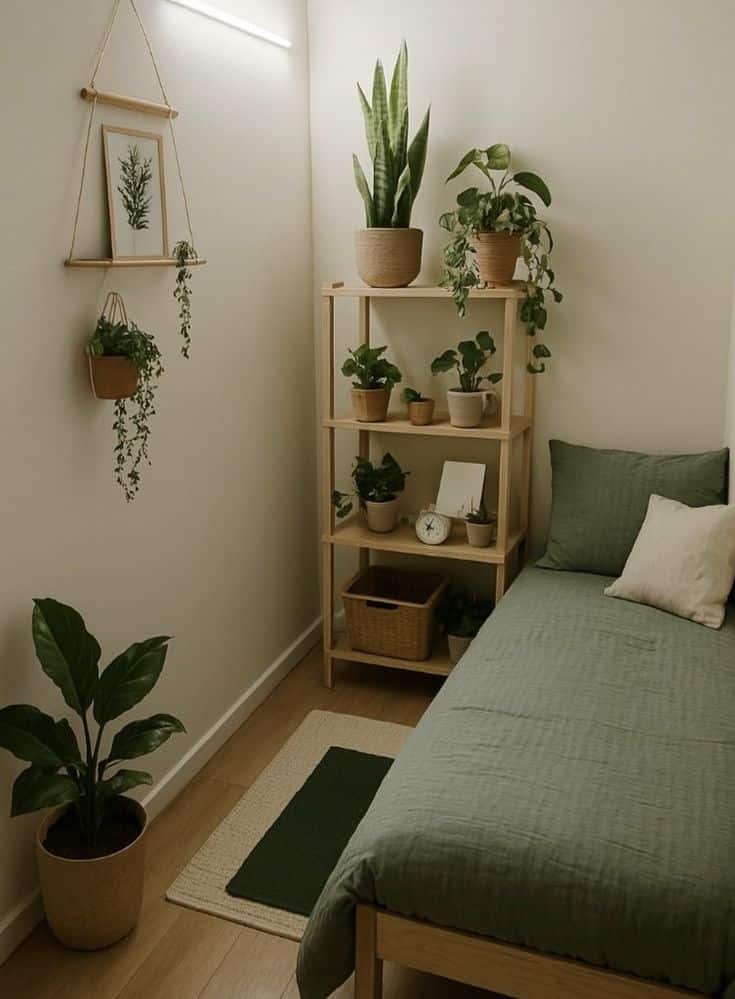
Plants bring life, freshness, and a touch of nature into any space.
- Small Potted Plants: Succulents, snake plants, or a Pothos can thrive in a bedroom and don’t take up much space.
- Hanging Plants: Utilize vertical space by hanging plants from the ceiling or in macrame hangers.
- Faux Plants: If you don’t have a green thumb, realistic faux plants can provide the same visual appeal without the maintenance.
The Importance of Layout and Flow: Strategic Placement
Even with the right furniture and decor, a poor layout can make a small room feel cramped and awkward. Thinking about how you move through the space is crucial.
The “Walkway” Principle
Always ensure there’s a clear path around the room, especially to and from the bed and the door.
- Minimum Clearance: Aim for at least 2-3 feet of clearance on the main path. If furniture blocks this, it feels like an obstacle course.
- Floating Furniture: Sometimes, pulling a bed slightly away from the wall (if space allows) or angling a piece can improve flow.
Furniture Placement Hacks
- Against the Longest Wall: Often, placing your bed against the longest wall makes the room feel more balanced and less squished.
- Corner Beds: In extremely tiny rooms, tucking a bed into a corner can free up significant floor space.
- Minimizing Protrusions: Choose furniture with sleek lines and minimal protrusions. Avoid items that stick out unnecessarily.
- Visual Weight: Distribute the “visual weight” of your furniture evenly. Don’t clump all the heavy, dark pieces together.
- Bed Canopy Magic: Even in a small space, a minimalist bed canopy ideas can create a cozy zone without overwhelming the room, especially if it’s light and sheer.
Conclusion: Your Dream Bedroom Awaits
A small bedroom doesn’t have to feel like a limitation; it can be an invitation to get creative, smart, and resourceful. By embracing a budget-friendly mindset, focusing on decluttering, maximizing vertical space, choosing light colors, and incorporating multi-functional furniture, you can transform your cramped quarters into a stylish, serene, and truly personal sanctuary. Remember, the goal isn’t just to make it look good, but to make it feel good – a place where you can relax, recharge, and truly feel at home. Prioritizing home comforts that feel like a warm hug will guide your choices.
So, roll up your sleeves, unleash your inner designer, and get ready to create the small bedroom of your dreams without breaking the bank. Your stylish and functional haven is just a few clever steps away!
Frequently Asked Questions
What’s the absolute first step for a small bedroom makeover on a budget?
The very first and most impactful step is decluttering. Removing unnecessary items instantly frees up visual and physical space, costing nothing and providing a clean slate for your makeover.
What colors should I use to make a small bedroom look bigger?
Light colors like whites, creams, pale greys, and soft pastels are best. They reflect light, making the room feel more open and airy. Using a monochromatic scheme (different shades of the same light color) also helps create a cohesive and expansive feel.
How can I add storage to a small bedroom without buying expensive furniture?
Utilize vertical space with wall-mounted shelves, tall narrow bookshelves, and over-the-door organizers. Consider repurposing items like crates for storage or using under-bed storage bins. Look for multi-functional furniture like ottomans with storage or beds with built-in drawers.
Are mirrors really effective in making a small room look larger?
Yes, absolutely! Mirrors are incredibly effective. A large mirror placed strategically (e.g., opposite a window or a focal point) reflects light and creates the illusion of depth, visually expanding the space.
Can I incorporate my personal style into a budget makeover?
Definitely! A budget makeover often encourages more creativity and authenticity. Start by creating a mood board to define your desired style. Then, use DIY projects, thrifted finds, repurposed items, and personal mementos to infuse your personality without spending a lot. Things like choosing specific frames for a gallery wall or painting an old piece of furniture a unique color are perfect for this.
What kind of lighting works best for small bedrooms?
Layered lighting is key. Maximize natural light with sheer curtains or blinds. For artificial light, use a combination of ambient (general), task (for specific activities like reading), and accent lighting (for mood). Space-saving fixtures like wall-mounted sconces or pendant lights are ideal.
How can I make my small bedroom feel cozy without making it look cluttered?
Focus on texture and strategic accents. Use light-colored, crisp bedding as your base, then add warmth with a textured throw blanket or a couple of accent pillows in your chosen color scheme. A large, light-colored rug can define the space and add comfort. Live plants or DIY art also add a cozy, personal touch without adding visual clutter.
- 5shares
- Facebook0
- Pinterest5
- Twitter0
